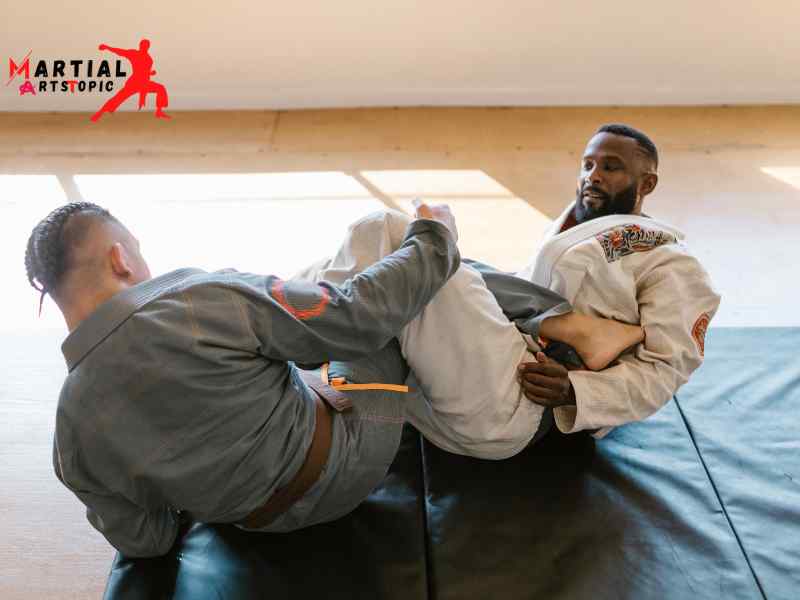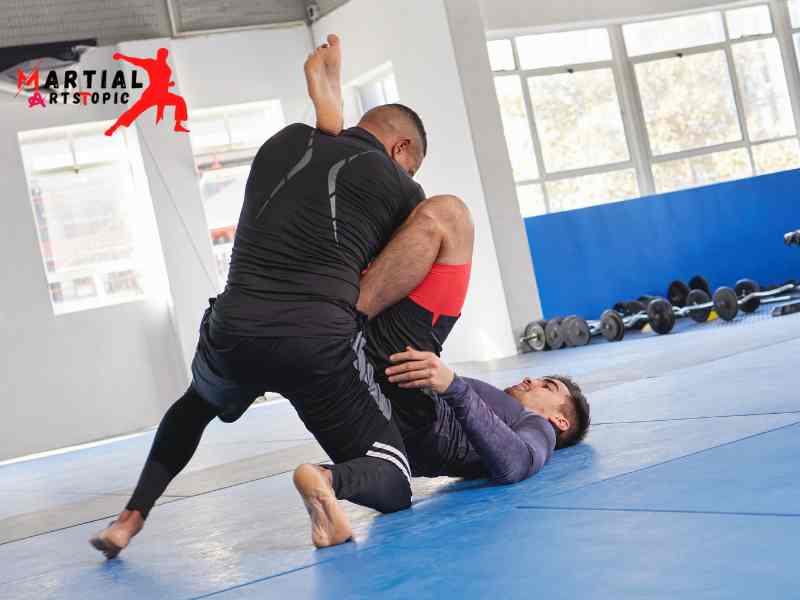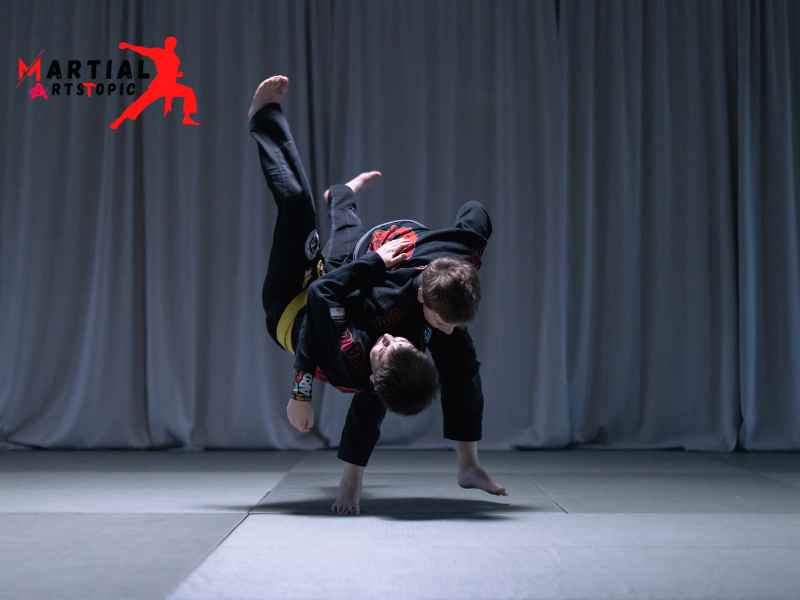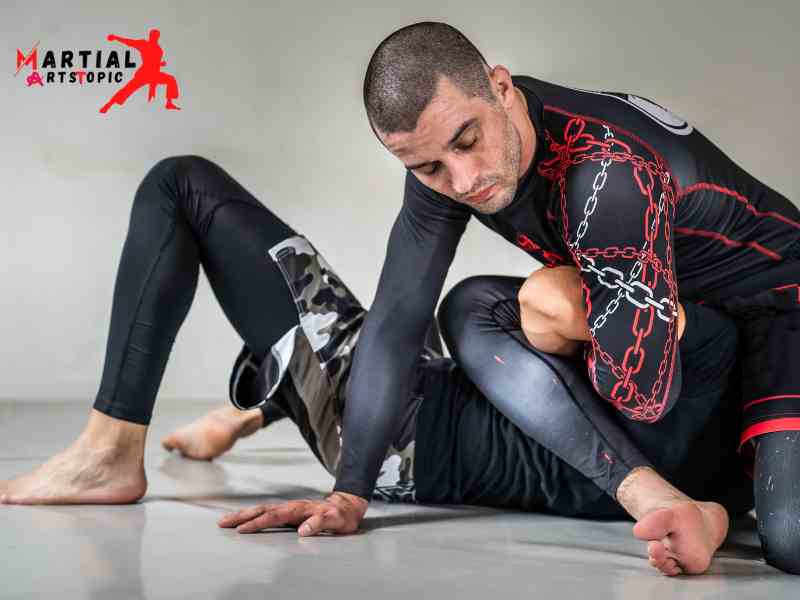
The Taekkyon Martial Arts
The Ancient Martial Art of Taekkyon: History, Origins, and Evolution Taekkyon, also known as the “foot-technique martial art,” is a fascinating ancient Korean martial art that has a rich history, deep-rooted origins, and an interesting evolution. The world of Taekkyon, exploring its history, origins, and how it has developed over time.
History of Taekkyon
Taekkyon’s origin can be traced back to the ancient kingdom of Goguryeo, which existed from 37 BCE to 668 CE. We believe that Taekkyon was developed during this period as self-defense and military training.
During the Joseon Dynasty (1392-1910), Taekkyon gained popularity among the royal court and the common people. It became an integral part of the military training and was also practiced as a recreational activity. Taekkyon was officially recognized as a national martial art during this time.
Origins of Taekkyon

The origins of Taekkyon can be found in the traditional Korean martial arts, known as Subak. Subak, which means “hand-technique,” was a style that focused on hand strikes and grappling techniques. Taekkyon emerged as a distinct style within the broader umbrella of Subak, emphasizing footwork, kicks, and leg sweeps.
The unique characteristic of Taekkyon lies in its fluid and rhythmic movements that incorporate both offensive and defensive techniques. Practitioners use a combination of circular footwork, graceful kicks, and fluid motions to outmaneuver their opponents.
Evolution of Taekkyon
Over the centuries, Taekkyon went through various changes and adaptations. During the Japanese colonial rule in Korea (1910-1945), the practice of Taekkyon was suppressed, and other martial arts, such as Karate and Judo, gained prominence. However, after Korea’s liberation, efforts were made to revive and preserve Taekkyon as a national treasure.
In the 1950s, General Choi Hong Hi, often regarded as the father of modern Taekwondo, played a significant role in the evolution of Taekkyon. He integrated elements of Taekkyon into his new martial art form, which later became known as Taekwondo.
Today, Taekwondo has gained worldwide recognition as an Olympic sport and is practiced by millions of people worldwide. However, Taekkyon has also managed to survive and is practiced by a dedicated community of enthusiasts who value its historical significance and unique techniques.
Benefits of Practicing Taekkyon
Practicing Taekkyon offers a wide range of benefits, both physical and mental. The rigorous training involved in Taekkyon helps improve strength, flexibility, endurance, and overall fitness. The rhythmic movements and focus required during practice also help enhance concentration and mental discipline.
Taekkyon promotes self-defense skills, teaching practitioners how to effectively protect themselves in real-life situations. The art form’s emphasis on balance, coordination, and agility also contributes to increased body awareness and improved motor skills.
In addition to the physical and mental benefits, practicing Taekkyon also allows individuals to connect with a centuries-old martial art form and gain a deeper understanding of Korean culture and history.
The Art of Taekkyon: Essential Tips and Training Strategies
The Art of Taekkyon: Essential Tips and Training Strategies Taekkyon, a traditional Korean martial art, is known for its dynamic kicks, fluid movements, and emphasis on footwork. With a history dating back over a thousand years, this martial art has developed into a popular sport and self-defense system. Whether you’re a beginner or an advanced practitioner, mastering the art of Taekkyon requires dedication, discipline, and a solid training strategy. In this blog post, we will explore essential tips and training strategies to help you excel in Taekkyon.
- Learn the Basics: Like any martial art, Taekkyon requires a firm foundation. Start by familiarizing yourself with the basic techniques, stances, and footwork. These include punches, kicks, blocks, and sweeps. Practice them repetitively to build muscle memory and improve your form. Remember, mastering the basics is crucial for advancing to more complex techniques.
- Focus on Flexibility: Flexibility is key in Taekkyon as it allows for swift and powerful movements. Stretching exercises, such as leg swings, hip rotations, and hamstring stretches, should be an integral part of your training routine. Improving your flexibility will not only enhance your kicks, but also reduce the risk of injury during high-intensity movements.
- Develop Agility and Speed: Taekkyon emphasizes quick movements, making speed an essential attribute. Incorporate exercises like agility ladder drills, shuttle runs, and speed kicks into your training regime. These exercises will improve your reaction time, footwork, and overall speed, enabling you to execute techniques with precision and efficiency.
- Enhance Strength and Conditioning: Taekkyon requires a combination of strength and endurance. Include strength training exercises, such as squats, lunges, push-ups, and core workouts, to build your overall strength. Additionally, cardiovascular exercises like running, skipping, and cycling will improve your stamina, allowing you to sustain your performance throughout a match or training session.
- Practice Partner Drills: Taekkyon is not just about individual techniques; it also involves sparring and partner drills. Find a training partner and practice various drills that simulate actual combat situations. This will help you develop timing, distance control, and effective counterattacks. Working with a partner will also enhance your reflexes and decision-making abilities.
- Study Martial Principles: Taekkyon is not solely about physical techniques; it also encompasses martial principles and philosophies. Familiarize yourself with the principles of balance, control, and timing. Understanding the underlying concepts will enable you to apply them effectively in your training and sparring sessions.
- Set Goals and Track Progress: To master Taekkyon, it’s crucial to set clear goals and track your progress. Define specific milestones, whether it’s achieving a certain belt rank or mastering a complex technique. Regularly assess your performance and make adjustments to your training strategy accordingly. Tracking your progress will help you stay motivated and focused on your journey to mastering Taekkyon.
Physical and Mental Benefits of Practicing Taekkyon
Are you looking for a martial art that not only strengthens your body but also enhances your mental well-being? Look no further than Taekkyon. This traditional Korean martial art offers a multitude of physical and mental benefits that can transform your life. The incredible advantages of practicing Taekkyon, both for your body and mind.
Physical Fitness
Taekkyon is renowned for its ability to improve physical fitness levels. Through a combination of dynamic movements, kicks, punches, and footwork, Taekkyon provides a full-body workout that targets various muscle groups. Regular practice of Taekkyon can help you:
- Improve Strength and Endurance: Taekkyon’s rigorous training sessions challenge your muscles, leading to increased strength and endurance levels over time.
- Enhance Flexibility: The fluid and dynamic movements in Taekkyon require a high degree of flexibility. By practicing this martial art, you will gradually improve your range of motion and overall flexibility.
- Boost Cardiovascular Health: The fast-paced nature of Taekkyon training elevates your heart rate, effectively improving your cardiovascular health and stamina.
Self-Defense Skills
Beyond physical fitness, Taekkyon equips practitioners with invaluable self-defense skills. The art focuses on fluid yet powerful movements that enhance your ability to defend yourself effectively. By mastering Taekkyon techniques, you can gain:
- Increased Awareness: Taekkyon training emphasizes situational awareness, teaching you to anticipate and react to potential threats.
- Enhanced Reflexes: The fast-paced nature of Taekkyon develops quick reflexes, enabling you to respond swiftly to any attack or danger.
- Improved Balance and Coordination: Taekkyon’s intricate footwork and precise movements enhance your balance and coordination, thereby helping you maintain control and stability during self-defense situations.
3. Stress Relief and Mental Well-being
Taekkyon’s mental benefits are just as remarkable as its physical advantages. The focused and disciplined nature of this martial art promotes various mental well-being benefits, including:
- Stress Reduction: The intense physical activity involved in Taekkyon releases endorphins, which act as natural stress-relievers, leaving you feeling calmer and more relaxed.
- Increased Confidence: As you progress in Taekkyon, you will gain confidence in your abilities, both in terms of physical fitness and self-defense skills. This newfound self-assurance can positively affect other areas of your life.
- Improved Concentration and Mental Clarity: The complexity of Taekkyon’s movements requires mental focus and concentration. Regular practice can sharpen your mind, improve memory, and enhance overall cognitive function.
Taekkyon for Self-Defense: Practical Applications in Modern Times

In the realm of martial arts, there are various disciplines that have stood the test of time, and Taekkyon is undoubtedly among them. Originating from Korea, Taekkyon is a traditional martial art known for its fluid movements, powerful kicks, and effective self-defense techniques. While it may have ancient roots, Taekkyon remains relevant in modern times, offering practical applications for self-defense.
Understanding Taekkyon
Taekkyon’s foundations lie in a harmonious blend of footwork, kicks, strikes, and joint locks. Its emphasis on fluidity and agility makes it a unique martial art that focuses on redirecting an opponent’s force rather than meeting it head-on. By utilizing circular movements, practitioners of Taekkyon can effectively neutralize attacks while simultaneously launching counter-attacks.
Practical Self-Defense Applications
Taekkyon’s practicality in self-defense situations stems from its efficient techniques and emphasis on speed and accuracy. Here are some key applications of Taekkyon for self-defense in modern times:
- Kicking Techniques: Taekkyon is renowned for its dynamic kicks, enabling practitioners to maintain a safe distance from an attacker while delivering powerful strikes. Kicks such as the front kick, side kick, and roundhouse kick can be quickly deployed to create distance, disable an opponent, or provide an opportunity to escape.
- Joint Locks: Taekkyon incorporates joint locking techniques that can immobilize an attacker by manipulating their joints, such as the wrist, elbow, or shoulder. These techniques are particularly effective in restraining an aggressor without causing severe harm, allowing practitioners to gain control of a situation while minimizing potential legal consequences.
- Defensive Maneuvers: Taekkyon’s circular footwork and evasive movements make it ideal for defense against multiple attackers. By utilizing quick footwork and strategic positioning, practitioners can evade incoming attacks and create opportunities to neutralize threats effectively.
- Mental Discipline: Beyond physical techniques, Taekkyon instills mental discipline, enabling practitioners to remain calm and focused during high-stress situations. This mental fortitude is vital in self-defense scenarios, allowing individuals to assess threats, make quick decisions, and respond appropriately.
Benefits of Taekkyon as a Self-Defense Art
- Versatility: The techniques employed in Taekkyon are versatile and can be adapted to various situations, making it a practical choice for self-defense in modern times.
- Physical Fitness: Training in Taekkyon provides a full-body workout, enhancing strength, flexibility, balance, and cardiovascular endurance. This physical conditioning contributes to overall fitness and self-confidence.
- Increased Awareness: Taekkyon training emphasizes situational awareness, teaching practitioners to recognize potential threats and avoid dangerous situations.
- Self-Confidence: As individuals develop their skills in Taekkyon, their self-confidence naturally increases. This newfound confidence can deter potential attackers and provide a sense of security in everyday life.
Benefits of Practicing Taekkyon
In the world of martial arts, Taekkyon stands out as a unique and captivating discipline. Rooted in ancient Korean traditions, this dynamic martial art boasts an array of physical, mental, and spiritual benefits. Whether you’re an aspiring martial artist or simply seeking a new way to enhance your overall well-being, practicing Taekkyon can be a life-changing experience.
Enhanced Physical Fitness
Taekkyon is a physically demanding martial art that engages every muscle in your body. With its emphasis on kicks, strikes, and footwork, regular practice can significantly improve your cardiovascular endurance, flexibility, and overall strength. Consistent training helps you develop lean muscles, increase agility, and enhance coordination, making Taekkyon an excellent full-body workout.
Self-Defense Skills
In today’s unpredictable world, having the ability to defend oneself is crucial. Taekkyon equips practitioners with practical self-defense techniques that can be applied in real-life situations. By mastering the art of striking, blocking, and evading, you’ll gain the confidence to protect yourself and your loved ones, should the need ever arise.
Stress Relief and Mental Well-being
Taekkyon provides an outlet for releasing stress and tension while promoting mental clarity and emotional balance. The focused and disciplined nature of the practice helps reduce anxiety, improve concentration, and boost self-confidence. Regular training sessions serve as meditation, allowing practitioners to find inner peace and tranquility amidst the chaos of daily life.
Improved Discipline and Focus
Taekkyon demands discipline, dedication, and perseverance. As you progress through the ranks, you’ll develop a strong work ethic and learn to set and achieve goals. The repetitive nature of training hones your focus, improving your ability to concentrate and multitask in other aspects of life. These traits extend beyond the training hall, positively impacting various areas of personal and professional life.
Cultivation of Tradition and Cultural Appreciation
Originating from ancient Korean traditions, Taekkyon carries a rich cultural heritage. By practicing this martial art, you become part of a lineage that stretches back centuries. Taekkyon’s deep-rooted history instills a sense of respect, appreciation, and connection to the Korean culture, allowing you to understand and embrace its values and customs.
Increased Self-Confidence
Taekkyon fosters self-confidence by teaching practitioners to push their physical and mental boundaries. As you progress in your training, you’ll witness your own growth and accomplishments, leading to increased self-esteem. The supportive and encouraging community within Taekkyon further bolsters your confidence, empowering you to face challenges both on and off the training mat.
Improved Balance and Coordination
The intricate footwork and fluid movements in Taekkyon enhance balance and coordination. Regular practice strengthens your core muscles, improves posture, and sharpens proprioception. These skills translate into better body control, stability, and gracefulness, benefiting not only your performance in Taekkyon but also in other physical activities and daily tasks.
Basic Techniques in Taekkyon

Taekkyon: Unveiling the Basic Techniques of this Ancient Martial ArtAre you fascinated by the world of martial arts? Do you find yourself captivated by the grace and power displayed by practitioners? If so, then Taekkyon might just be the perfect martial art for you to explore. In this blog post, we will dive deep into the world of Taekkyon and discover its basic techniques.
Taekkyon, also known as “the way of the foot and fist,” is a traditional Korean martial art that dates back over 2,000 years. We know it for its unique blend of fluid footwork, dynamic kicks, and intricate hand strikes. Taekkyon emphasizes the use of the entire body, combining agility, speed, and precision to overcome opponents.
Let’s inspect some of the basic techniques that form the foundation of Taekkyon:
- Stances: Proper stances are crucial in Taekkyon as they provide a solid foundation for executing techniques. The most common stances in Taekkyon include the “Ap Seogi” (front stance), “Hogi” (horse stance), and “Dwitkubi” (back stance).
- Footwork: its graceful and agile footwork characterizes Taekkyon. Practitioners learn to move swiftly and smoothly, using circular and linear patterns, to maintain balance and create openings for attacking or evading.
- Kicks: Taekkyon is renowned for its high, fast, and powerful kicks. Some of the common kicks in Taekkyon include the “Ap Chagi” (front kick), “Yop Chagi” (sidekick), and “Dollyo Chagi” (roundhouse kick). We executed these kicks with precision and speed, making them effective in both offense and defense.
- Hand Strikes: While Taekkyon is primarily known for its kicks, hand strikes are equally important. Taekkyon practitioners learn various hand techniques such as punches, open-handed strikes, and grappling techniques to complement their kicking skills.
- locks and Parries: Defensive techniques play a vital role in Taekkyon. Practitioners are trained to block and parry incoming attacks using their arms, legs, and body. These techniques are designed to redirect or neutralize the opponent’s energy while maintaining a vigorous defense.
- Throws and Sweeps: Taekkyon incorporates throws and sweeps to destabilize opponents and gain control. Practitioners learn techniques such as “Nalgae” (hip throw) and “Dwi Chagi” (sweeping kick), utilizing their body movements and leverage to take down their adversaries.
- Sparring: Sparring, known as “Gyeorugi” in Taekkyon, is an essential aspect of training. It allows practitioners to apply their techniques in a controlled environment, testing their skills and reflexes against a resisting opponent.
Taekkyon is not just a physical martial art; it encompasses a holistic approach to personal growth and self-discipline. Through its practice, individuals develop focus, discipline, and mental fortitude, enhancing their overall well-being.
Taekkyon: Tips and Tricks for Beginners
Taekkyon: Tips and Tricks for Beginners If you’re a beginner looking to delve into the world of martial arts, Taekkyon is an excellent choice. Originating in Korea, Taekkyon is a traditional martial art that focuses on fluid kicks, strikes, and grappling techniques. Some valuable tips and tricks to help beginners on their journey to mastering Taekkyon.
- Find a Reputable Instructor: To start your Taekkyon journey on the right foot, it’s crucial to find a knowledgeable instructor. Look for someone who has deep expertise in Taekkyon and a passion for teaching. A qualified instructor will guide you through the fundamentals, correct your posture, and provide valuable insights that will accelerate your progress.
- Focus on flexibility and stretching: Taekkyon requires a high level of flexibility and mobility. Regular stretching exercises will improve your range of motion, allowing you to execute swift and powerful kicks. Incorporate dynamic stretches, such as kicks and lunges, into your warm-up routine to improve your overall flexibility.
- Primary Basic Techniques: Taekkyon has a variety of kicks, strikes, and blocks. It’s essential to master the basic techniques before moving on to more advanced moves. Spend ample time practicing foundational techniques like front kicks, roundhouse kicks, and punches. By mastering the basics, you will build a solid foundation for your Taekkyon journey.
- Practice Footwork: Footwork plays a vital role in Taekkyon. It helps with balance, agility, and effective execution of techniques. Practice various footwork drills, such as stepping, pivoting, and shuffling, to improve your coordination and foot placement. Remember to maintain a stable center of gravity to ensure stability during movements.
- Train Stamina and Endurance: Taekkyon demands physical stamina and endurance. Incorporate cardiovascular exercises like running, skipping rope, or cycling into your training routine to build up your stamina. Endurance training will enable you to sustain intense movements and perform at your best throughout a Taekkyon session.
- Focus on Core Strength: A strong core is essential for generating power and maintaining balance in Taekkyon. Include core-strengthening exercises like planks, sit-ups, and Russian twists in your training regimen. Strengthening your core will enhance your overall stability and help you execute techniques with more power and control.
- Practice Sparring: Sparring is an integral part of Taekkyon training. It allows you to apply your techniques in a dynamic and realistic setting. Find a training partner or participate in supervised sparring sessions to enhance your reflexes, timing, and adaptability. Remember to focus on control and safety during sparring sessions.
- Study the Philosophy: Taekkyon is not just about physical techniques; it encompasses a rich philosophical background as well. Take the time to study and understand the principles of Taekkyon, such as respect, discipline, and self-control. Embracing the philosophical aspects of Taekkyon will deepen your connection with the martial art and enhance your overall experience.
Conclusion
Taekkyon is a fascinating traditional Korean martial art that showcases a unique blend of fluid movements, agility, and precision. With its emphasis on both offensive and defensive techniques, Taekkyon offers practitioners a holistic approach to combat and self-defense. The intricate footwork, graceful kicks, and dynamic throws make it a visually captivating martial art to observe. Moreover, Taekkyon’s focus on cultivating mental discipline, respect, and fair play adds to its appeal as a means of personal growth and character development. Whether one is interested in learning self-defense, staying fit, or immersing themselves in a rich cultural tradition, Taekkyon proves to be an excellent choice. Its centuries-old history and continued popularity attest to its enduring significance in the martial arts world.
